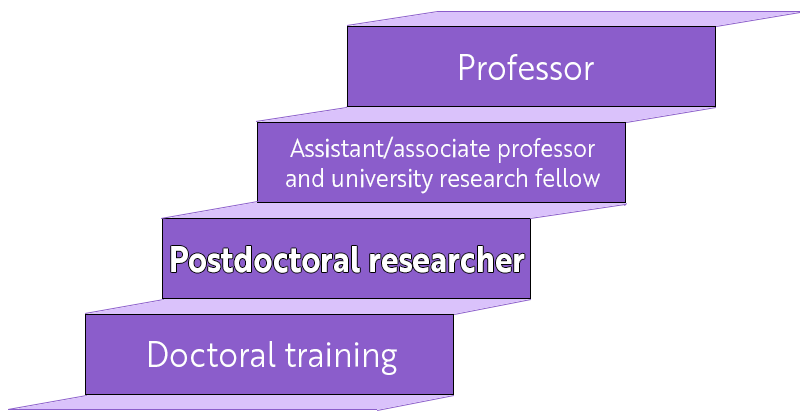In today's evolutionary academic landscape, academics who complete their doctoral students are often faced with two early career options: pursuing a Postdoctoral research position (post-doc) or accept a role of Contract (or supplement) member of the faculty. Although the two roles allow researchers to stay in the academic ecosystem and to contribute significantly to their institutions, they differ considerably with the objective, expectations, responsibilities and long -term career implications.
This blog article provides a detailed comparison between postdoctoral positions and the roles of contractual teachers to help academics at the start of their career to make enlightened choices according to their objectives, their interests and aspirations.

1. Objective and main orientation
Postdoctoral researcher:
- Aim: To deepen research expertise, gain independence and build a solid academic portfolio (publications, grants, collaborations).
- To focus: However, mainly oriented towards research, but may include teaching, supervision or limited mentorship.
- Post-doctoral students are considered a transition phase between the doctorate and a position of permanent research or teachers.
Contract faculty:
- Aim: To meet institutional teaching needs, often on a temporary basis or semester.
- To focus: Mainly focused on teaching, with heavy lectures and little or no expectations of research or financing.
- The positions are often renewed each year or by semester and are motivated by the demand for immediate teaching rather than by the production of long -term research.
2. Professional responsibilities
Postdoc:
- Conducts advanced research under a main researcher (PI) or independently.
- Writes and publishes learned articles.
- Applies to research subsidies or scholarships.
- Can supervise graduate students and present results during conferences.
- Occasionally teaches a course or conferences of guests, but it is not always necessary.
Contract faculty:
- Sneerates several semester, often on different subjects or departments.
- Prepares conferences, performs evaluations, manages the performance of students.
- Engages within a limit to any research, because institutional support and research time are minimal.
- Can advise students or participate in administrative tasks but lacks formal power or long -term influence within departments.
3. Employment status and benefits
Postdoc:
- Generally hired on a fixed -term research contract (1 to 3 years), often with a fund -based renewal.
- Can be funded by a subsidy, a scholarship or an institutional program.
- Services (health care, retirement) vary considerably depending on the institution and the country.
- Considered a role of “trainee” in many systems, which means less employment security and less rights of employees.
Contract faculty:
- Employee on semi -annual or annual contracts.
- Often receives a fixed teaching allowance by course or by term.
- Limits or not access to health benefits, research funds or sabbatical leave.
- Considered contingent teachers, with little institutional lever effect and minimum promotion chances.
4. Career advancement and future prospects
Postdoc:
- Designed as a springboard to a permanent or permanent research position.
- Successful post-doctoral students can move to the roles of assistant professor, researchers or independent researchers.
- Opportunities to build a solid CV through publications, grants and collaborative projects.
- Competitive, with pressure to obtain high research production in a short time.
Contract faculty:
- Progress options are limited.
- Rarely leads to follow -up positions unless institutional hiring policies change or the candidate has an exceptional teaching and research file.
- More suited to those who wish to focus on teaching or use the position as a temporary option while looking for permanent roles.
- Can serve as a long -term career for some, but often lacks stability or ascending mobility.
5. Skills development and academic profile
Postdoc:
- Win a high -level research experience, advanced technical skills and an exposure to interdisciplinary work.
- Develops a drafting of subsidies, project management and academic editing expertise.
- Built an attractive profile for research institutions and financing agencies.
Contract faculty:
- Win a vast educational experience, including the design of the curriculum, class management and students' evaluation.
- Can improve public speaking, time management and student mentoring skills.
- Less the emphasis on research means a slower growth in the publishing or financing file, which could hinder research -based academic employment requests.
6.
Postdoc:
- Evaluated within the framework of the institution's research infrastructure.
- Contributes to scientific production, laboratory productivity and innovation.
- Often works behind the scenes and can lack visibility or formal status in departmental decision -making.
Contract faculty:
- Plays a crucial role in the teaching and performance of the curriculum.
- Students can consider them as primary educators, but establishments can offer little recognition, respect or support.
- Often excluded from faculty meetings, discussions on permanence or strategic planning.
7. Geographical and disciplinary variations
- In Rod fieldsPostdocs positions are more common and often necessary before applying for permanently jobs.
- In Human sciences and social sciencesThe roles of contract teachers are more widespread due to fewer postdoctal opportunities and less research funding.
- Different countries also treat these roles differently. For example, in Europe, post-doctoral students are often better remunerated and more integrated into academic systems than in certain parts of Asia or North America.
Which path should you choose?
The decision between a postdoc post and a contract office depends on your long -term career objectives:
| Aim | Recommended path |
|---|---|
| I want an academic career with a high research intensity | Post-doctoral student |
| Want to earn more publications and grants | Post-doctoral student |
| Interested in teaching as a main profession | Faculty of contract |
| Need a short -term academic job for financial or location reasons | Faculty of contract |
| Plan to move to industry later | EitherDepending on the field and the role |
Conclusion: two paths, different trips
Postdoctoral and contractual roles are essential to the functioning of university establishments. Everyone offers unique experiences, advantages and challenges. While postdoctoral positions promote growth with high research intensity and are ideal for those who target research careers, the roles of contractual teachers offer stability in teaching and can serve as significant academic experiences, in particular for those who fascinated by pedagogy.
Understanding the differences between the two can help researchers at the start of their career make strategic decisions about the place where to invest their time, their energy and their passion. Whatever the chosen path, each role offers opportunities to contribute to the academic world and to shape the future of knowledge.


